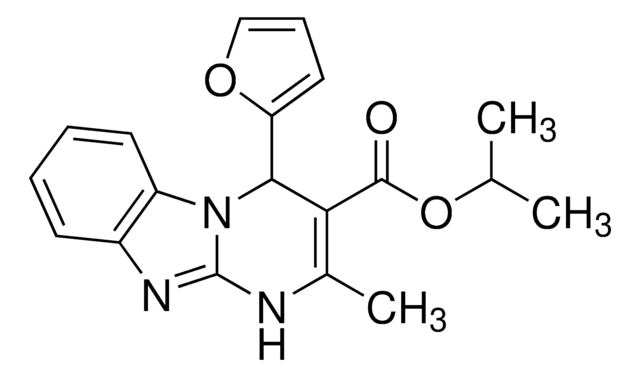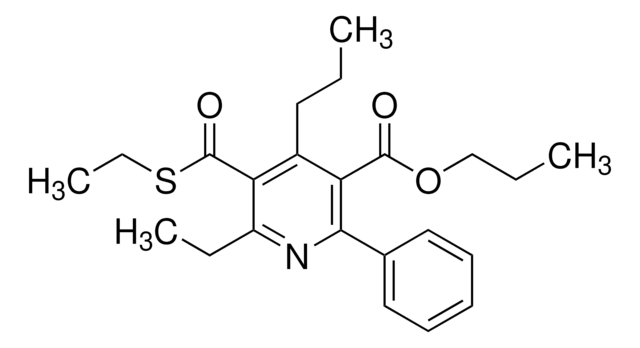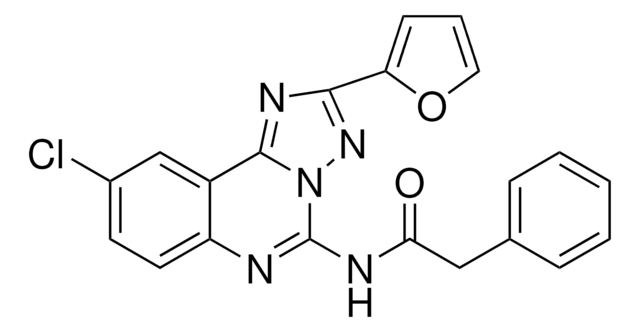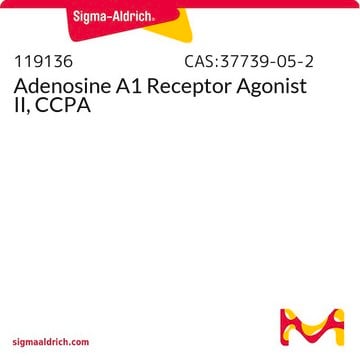M227
MRS 1191
solid
Synonim(y):
3-Ethyl-5-benzyl-2-methyl-4-phenylethynyl-6-phenyl-1,4-(±)-dihydropyridine-3,5-dicarboxylate
About This Item
Polecane produkty
Postać
solid
kolor
white
rozpuszczalność
DMSO: >10 mg/mL
ethanol: >10 mg/mL
H2O: insoluble
temp. przechowywania
−20°C
ciąg SMILES
CCOC(=O)C1=C(C)NC(c2ccccc2)=C(C1C#Cc3ccccc3)C(=O)OCc4ccccc4
InChI
1S/C31H27NO4/c1-3-35-30(33)27-22(2)32-29(25-17-11-6-12-18-25)28(26(27)20-19-23-13-7-4-8-14-23)31(34)36-21-24-15-9-5-10-16-24/h4-18,26,32H,3,21H2,1-2H3
Klucz InChI
SNVFDPHQAOXWJZ-UHFFFAOYSA-N
Działania biochem./fizjol.
Przestroga
Kod klasy składowania
11 - Combustible Solids
Klasa zagrożenia wodnego (WGK)
WGK 3
Temperatura zapłonu (°F)
Not applicable
Temperatura zapłonu (°C)
Not applicable
Środki ochrony indywidualnej
Eyeshields, Gloves, type N95 (US)
Certyfikaty analizy (CoA)
Poszukaj Certyfikaty analizy (CoA), wpisując numer partii/serii produktów. Numery serii i partii można znaleźć na etykiecie produktu po słowach „seria” lub „partia”.
Masz już ten produkt?
Dokumenty związane z niedawno zakupionymi produktami zostały zamieszczone w Bibliotece dokumentów.
Nasz zespół naukowców ma doświadczenie we wszystkich obszarach badań, w tym w naukach przyrodniczych, materiałoznawstwie, syntezie chemicznej, chromatografii, analityce i wielu innych dziedzinach.
Skontaktuj się z zespołem ds. pomocy technicznej








